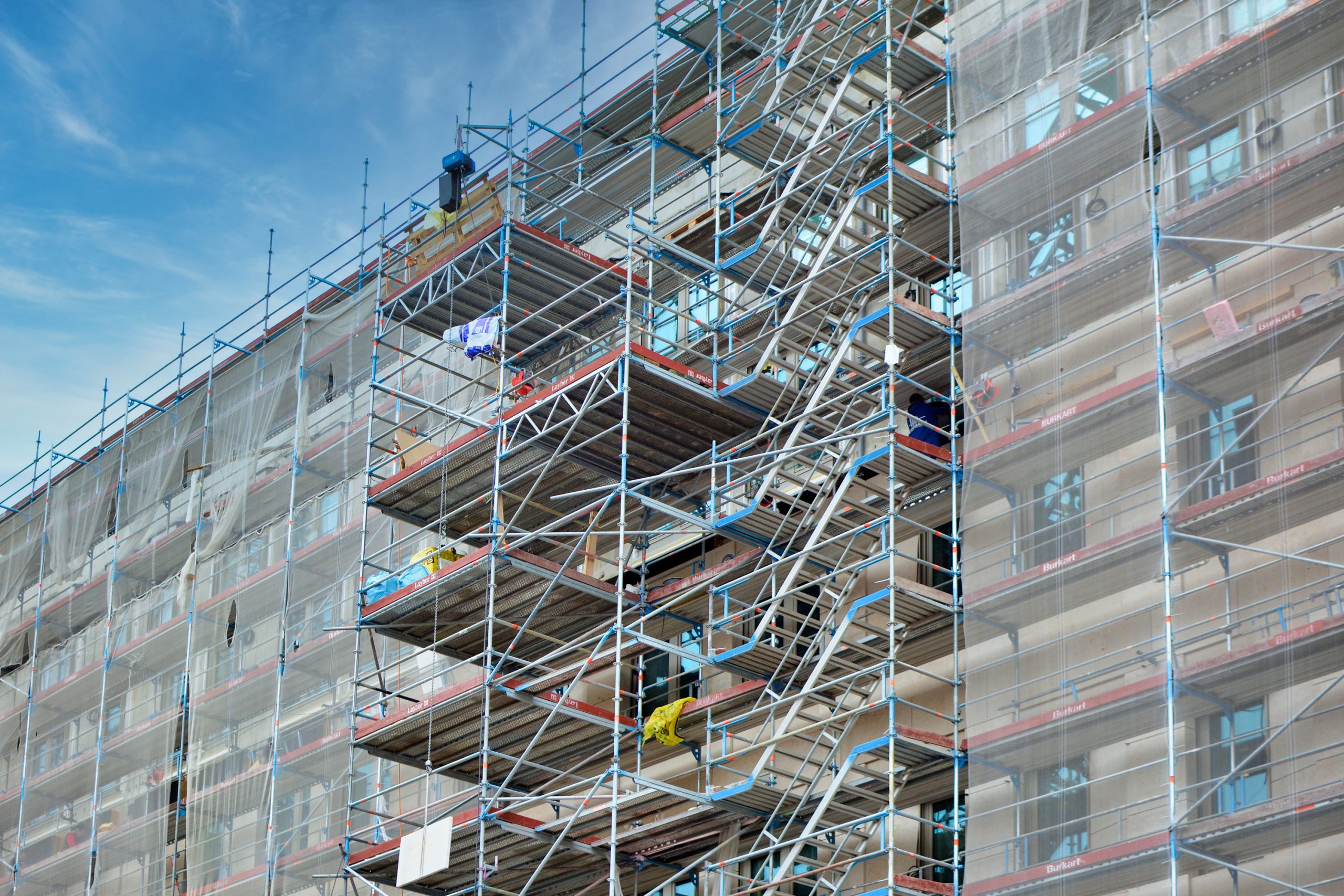
Simply put, distressed risks in property insurance are properties that are outside of the norm and therefore presenting more risk and financial exposure to an insurer in the event of a claim. The horror of the Grenfell Tower fire tragedy back in 2017 was a terrible and horrific example of this – alongside for example lots of severe UK floods in recent years – meaning that distressed risks are more expensive and harder to insure today than ever before.
Strictly speaking no, but vacant properties do come with their own insurance challenges. Insurers generally see vacant properties – especially vacant commercial properties that have been unoccupied for more than 30 days – as higher risk because no-one is around day-to-day for maintenance, upkeep and to act as a deterrent to crime. PHP Insurance have access to vacant property underwriters and also employ our own risk management services to ensure a multitude of factors are considered.
Aluminium Composite material panels are commonly used for cladding buildings typically as a form of rainscreen. ACM cladding consists of two skins bonded to either side of a lightweight core of materials such as polyethylene, polyurethane, profiled metal, or a mineral core.
The Grenfell Tower fire in West London on 14 June 2017 claimed 72 lives. The tragedy exposed serious failings across the whole system of building and managing high-rise homes. The Government took immediate steps to make residents safer and asked Dame Judith Hackitt to carry out an independent review of building regulations and fire safety to understand the causes of the fire. The fire started in one of the apartments and spread to the external rainscreen which had a polyethylene core, which is highly combustible. The review concluded that the whole system needed major reform and that residents’ safety needed to be a greater priority through the entire life cycle of a building – from design and construction, through to when people are living in their homes.
The definition of compartmentation is a building or part of a building comprising one or more rooms, spaces or storeys constructed to prevent the spread of fire to or from another part of the same building or an adjoining building. The two main reasons that fire compartmentation is required are for life safety and property protections purposes. Fire compartmentation is achieved by several activities including the following: – a) Use of fire-resistant materials and cavity barriers b) Divide cavities at junctions and cavity closures c) Fire doors and frames d) Smoke detection Advice should be obtained from a qualified fire engineer.
The external wall system is made up of the outside wall of a residential building including cladding, insulation and fire brake systems. Ever since the Grenfell Tower tragedy in 2017, the issue of fire safety in high rise residential properties has become a priority for Government, owners, tenants, building managers and particularly insurers. As a result, the cost of buildings insurance has increased significantly. In response to an increased number of queries related to such properties and risks, we have produced an overview of issues which you may want to consider.
The Royal Institute of Chartered Surveyors introduced The External Wall Review process and resulting form as a set way for a building owner to confirm that an external wall system on a residential building has been assessed for safety by a suitable expert. The process will require a fire safety assessment conducted by a suitably qualified and competent professional, which will deliver assurances for lenders, valuers, residents, buyers and sellers. The review was developed through extensive consultation with a wide range of stakeholders including fire engineers, lenders, valuers and other cross-industry representatives. Following Government advice, the form was initially designed for external wall systems on buildings above 18 metres and was created to ensure the materials and fixings to be assessed for safety to allow lenders to offer mortgages. However, following a change in government advice in January 2020 which brought all buildings into scope, meaning some residential buildings below18m which have ‘specific concerns’ may also now require a EWS1. Examples include 4-6 storey buildings which may have combustible cladding or combustible balconies which are a clear risk to life safety and will require remediation.
The owner of the building, management committee or property management company who has primary responsibility for the repair of the property.
The EWS1 form must be completed by a fully qualified member of a professional body within the construction industry, with sufficient expertise to identify the relevant materials within the wall cladding and attachments, including whether fire resisting cavity barriers and fire stopping has been installed correctly.
If the original developer’s paperwork is available this will be reviewed but cannot be solely relied upon and will still need physical inspection. In some instances where the nature of the insulation cannot be identified, intrusive tests may be required, by drilling into the cladding and the material scientifically analysed.
If combustible material is identified, then the qualified professional will make recommendations for the remedial works required. Thereafter, the owner or agent will undertake a tender process to obtain costs to return the building to a safe condition.
In May 2020 the Government proposed a fund of £1.6 Billion toward the cost of replacing ACM Cladding, subject to strict terms and conditions. Following a review in February 2021, The Secretary of State for Housing, Communities and Local Government proposed to increase the fund to £5 Billion for properties over 18 metres and to introduce a system of loans for properties between 11 and 18 metres. Presently, the building safety fund and proposed loans only cover the replacement of ACM Cladding but does not extend to compartmentation, fire breaks, timber cladding and timber boarded balconies. Although the review increased the fund to £5 Billion, many in the industry believe the true figure to be more than £15 Billion.
This has now been superseded by the Building Safety Act which was implemented in June 2022 in which Michael Gove (The then Minister for Levelling Up, Housing and Communities) then announced that any remediations cost should be meet by the original developer or any entity associated with the original developer.
The act also put into law that no costs will be recoverable from the individual leaseholders
The identification of combustible materials is what is known as a ‘material fact’ and therefore must be declared to your insurers. Failure to notify a ‘material fact’ may invalidate your cover and any claims can be repudiated.
Following the disclosure of a combustible cladding, unfortunately this will have a significant influence on any potential premiums and some insurers restrict some covers and may not provide renewal terms. We recommend full disclosure to your insurers and have designed a risk management questionnaire to help our clients to be as open as possible, to enable us to work with the insurers on your behalf.
Once the remedial works have been completed then a further EWS1 will be required to confirm that the building is now meeting the current requirements and to assure the various stakeholders. In addition, insurance costs should reduce to in-line with the current market rating at that time.
The EWS1 form is valid for 5 years.
If an EWS1 identifies the insulation to be combustible, the local authority or the fire authorities may insist on the employment of a waking watch company, if the building has no alarm to allow for the evacuation of the building in the event of a fire. The waking watch patrol the building and would raise an alarm in the event of an incident occurring. The waking watch will have to be retained until a fire alarm is fitted or the remedial works completed. The Government have recently allocated £30 million pounds toward the fitting of alarms.
